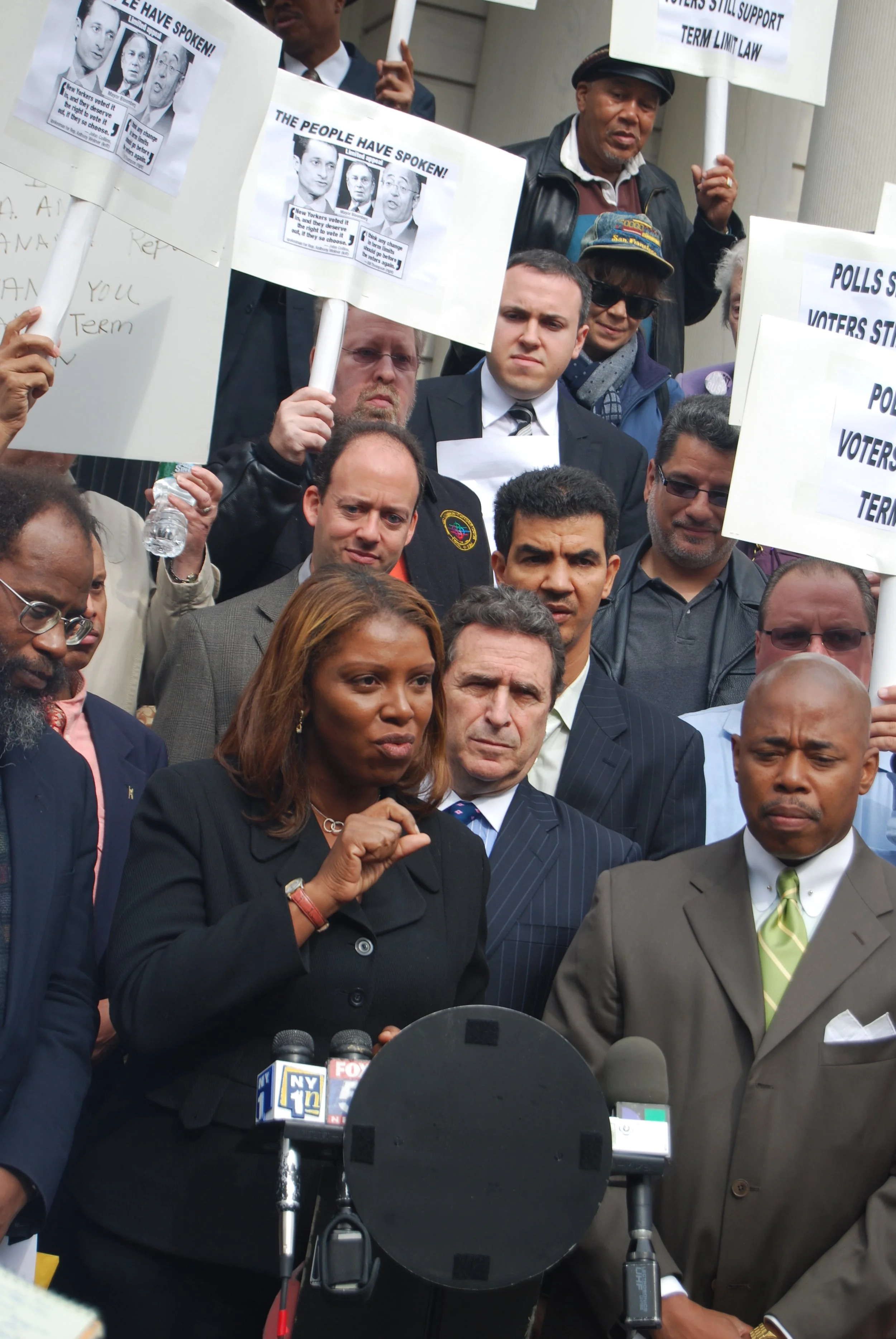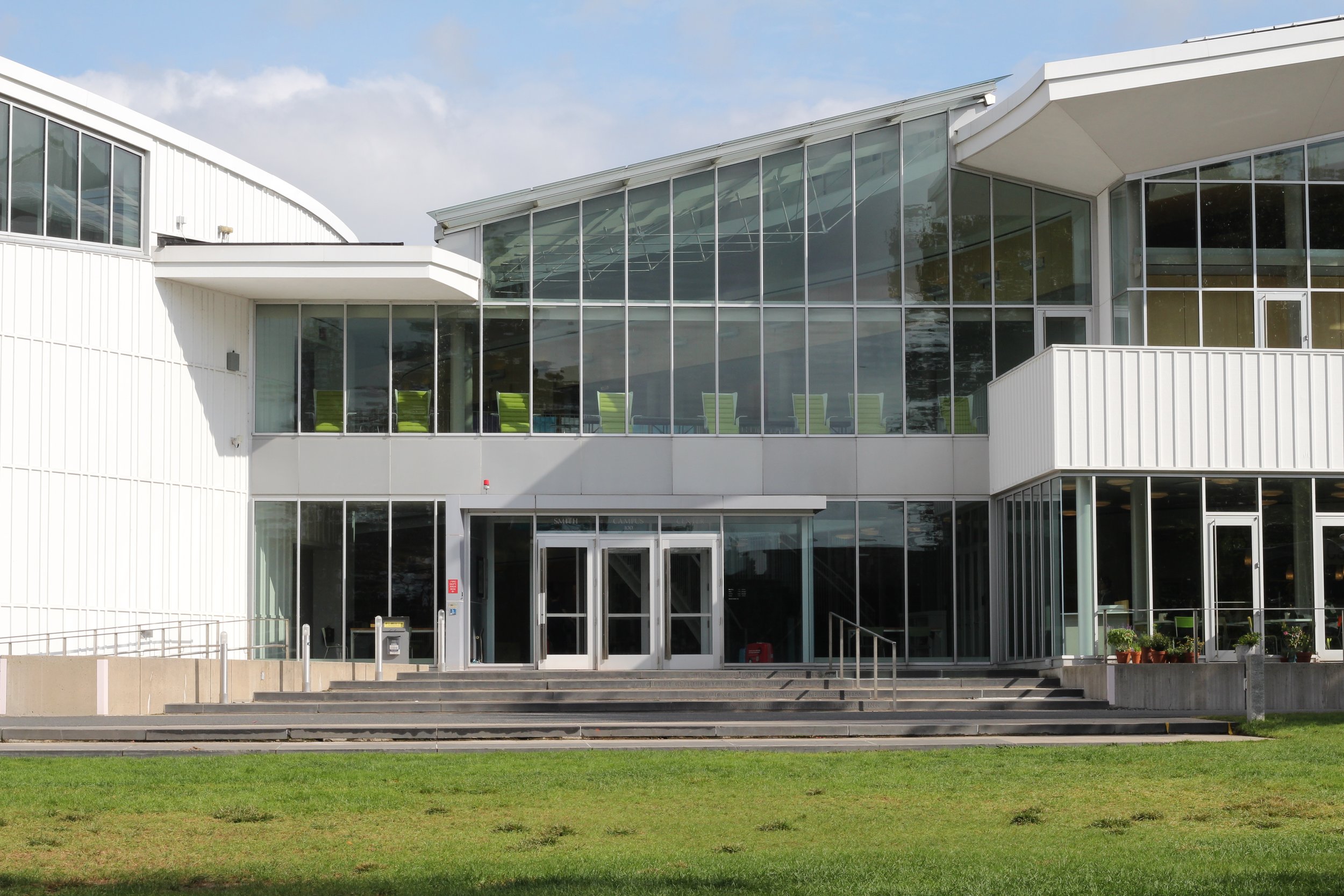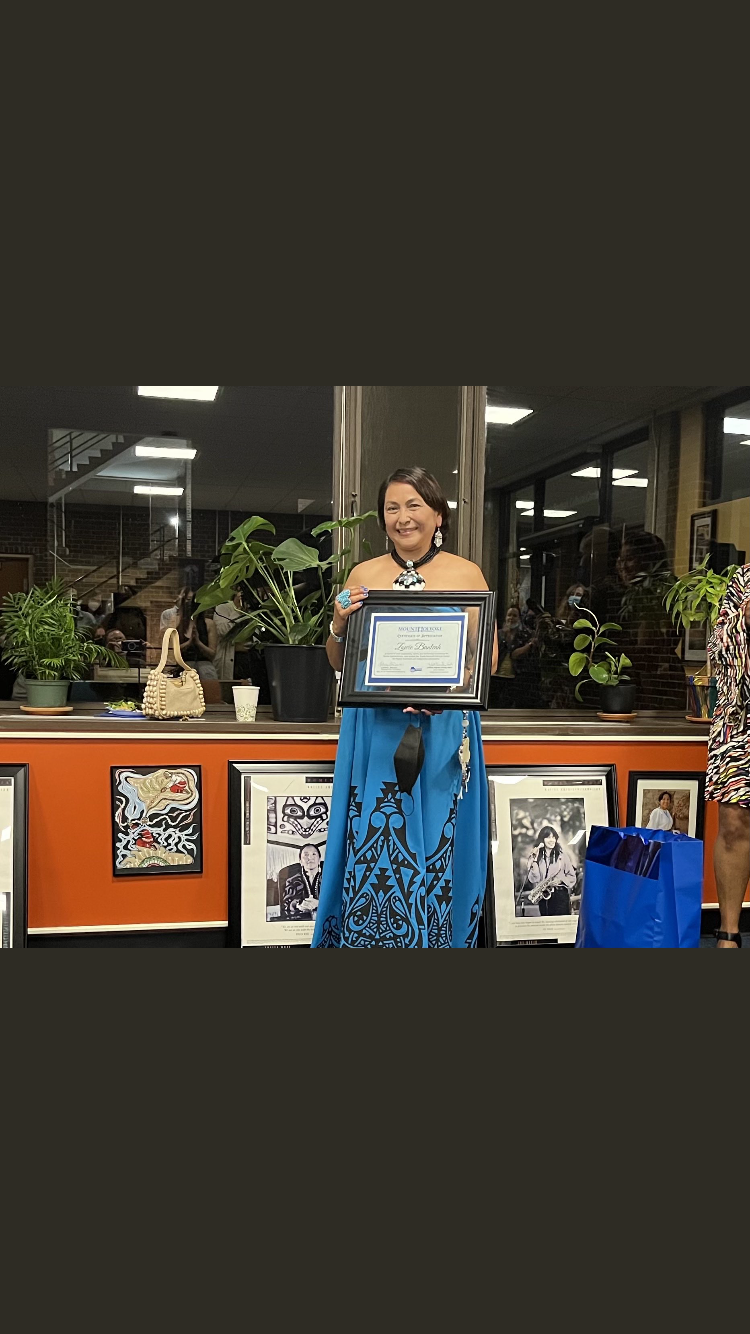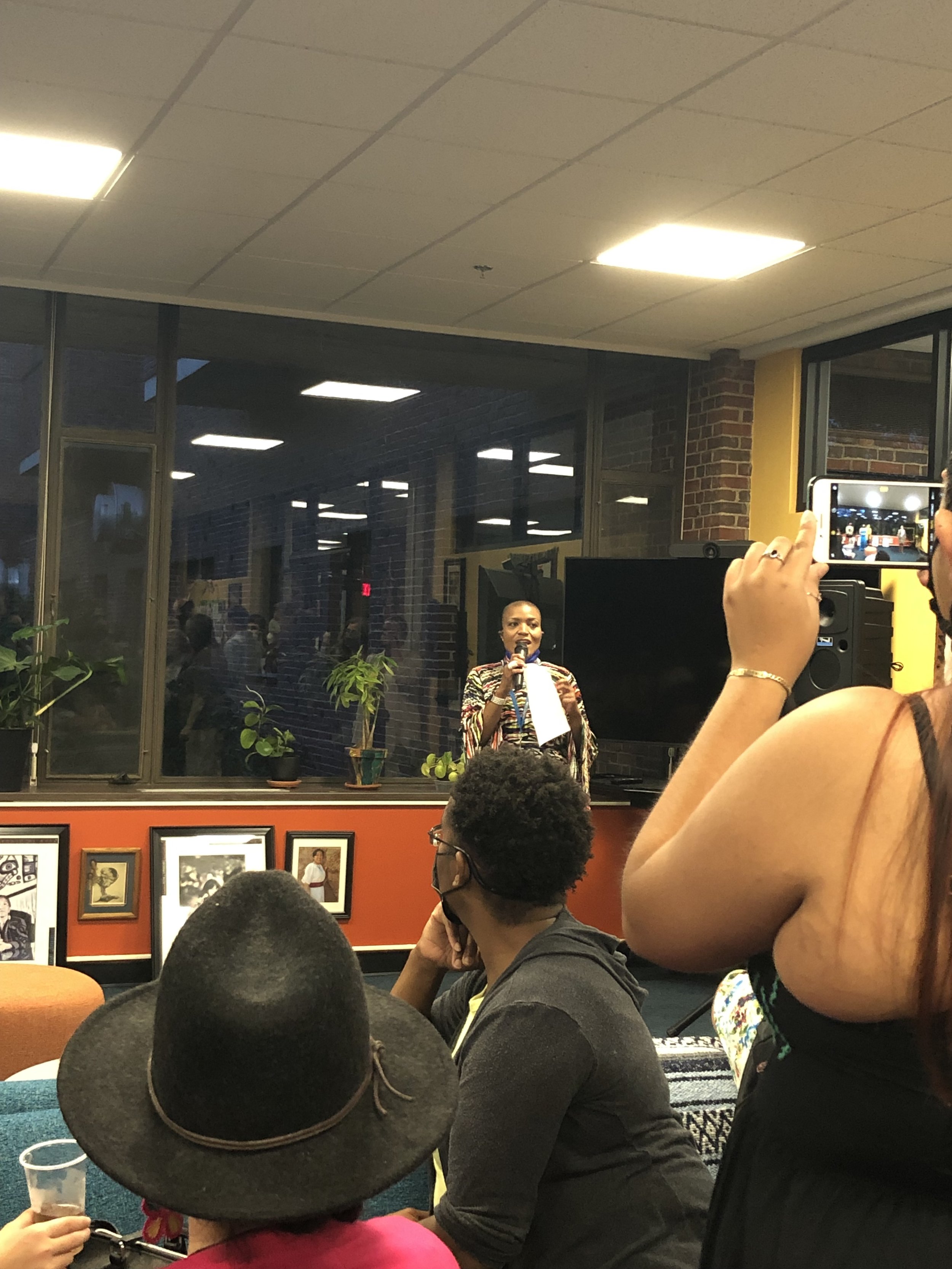Trump accused of fraud by New York Attorney General in lawsuit
On Wednesday, Sept. 21, New York Attorney General Letitia James filed an extensive lawsuit accusing former President Donald Trump of “overvaluing his assets by billions of dollars,” The New York Times reported. James is suing the family-run Trump Organization, as well as Trump’s three eldest children, Ivanka, Eric and Donald Trump Jr.
Railroad strike averted, but travel plans derailed for many passengers
Photo by Ali Meizels ’23.
Amtrak trains travel to and from Union Station – pictured above – in Springfield, Massachusetts.
By Gillian Petrarca ’23
Staff Writer
The possibility of a railroad strike last weekend affected many students’ travel. Railroad workers from 12 labor unions across the country, such as the National Carriers’ Conference Committee and the Brotherhood of Locomotive Engineers and Trainmen, reached a stalemate in the bargaining of a new contract and were set to strike on Friday Sept. 16.
The main grievance for union members was paid sick leave. The workers were bargaining for 15 days of paid sick leave to be granted on a points-system policy. Management was hesitant to bargain on these issues, according to National Public Radio.
“We’re in a time when a lot of people have moved to remote work — so paid sick leave and job flexibility [are] becoming important,” Professor and Chair of Economics and labor economist Michael Robinson said.
In preparation for the strike, many Amtrak locations canceled trips. Arianna Ortiz Tencio ’23 was set to take a trip to Boston for the weekend when her train was canceled. “It was so frustrating, and the craziest part is that I never got an email about it. Only [my friend] did,” Tenicio said. Tenicio filed for a refund and was issued a refund fairly quickly, “But … they weren’t automatically issued, you had to go into the website and fill out your information. … I feel bad that the railroad workers have to go on strike in general,” Tenicio said.
The strike was averted by President Biden’s intervention when he helped negotiate a deal which would give railroad workers “some number of unpaid sick days,” as well as the uncontested ability to attend medical appointments, according to LaborNotes. The union vote on this contract is set for November.
Vladimir Putin and Xi Jinping convene at summit in Uzbekistan
Photo courtesy of The Kremlin/President of Russia’s Office via WikiMedia Commons.
The president of Russia, Vladimir Putin, and the president of China, Xi Jinping, pictured prior to their discussions in Beijing this year, during which Xi alluded to the February 2022 Ukrainian invasion.
By Amelia Potter ’26
Staff Writer
Before the invasion of Ukraine this past February, Chinese President Xi Jinping and Russian President Vladmir Putin declared a friendship of “no limits”, as reported by The New York Times. As it turns out, there are boundaries to this political allyship. The Times reported on Sept. 15, Jinping and Putin convened at a summit in Uzbekistan along with several other state leaders. According to NPR, the summit was a gathering of members from a security group created by China and Russia to counterbalance the influence of the United States.
The New York Times described the countries as coming to the meeting from places of “mutual weakness.” As stated by The New York Times, China is currently experiencing an “economic slowdown” — a consequence of strict COVID-19 restrictions and lockdowns. Putin, on the other hand, faced criticism as the war effort in Western-backed Ukraine turned against him. This month, as reported by The New York Times, Russia has lost “1,000 square miles” of territory. Despite Putin’s attempts to project strength, U.S. officials estimate there have been up to “80,000 Russian casualties in less than six months.”
Since the invasion of Ukraine triggered severe economic sanctions from the U.S. and other European countries on Moscow, China has been an economic lifeline for Russia. The New York Times reports that China remains a significant buyer of Russian commodities, and continues to be a crucial market for Russian exports.
As reported by The New York Times, Putin said at Thursday’s summit, “We highly appreciate the balanced position of our Chinese friends in connection with the Ukrainian crisis. We understand your questions and concerns in this regard,” Putin said during the meeting. Xi, however, did not speak of Ukraine. He only provided the statement that,“In the face of changes in the world, times and history, China is willing to work with Russia to demonstrate the responsibility of a major country, play a leading role, and inject stability and positive energy into a turbulent world.” The New York Times reported that scholars familiar with statements from the Chinese government interpreted Xi’s statement as an “implicit rebuke” of the invasion.
Ties between China and Russia go back to 1949, when the People’s Republic of China established a strong bond with the Soviet Union, according to the Center for Strategic and International Studies. Although the dynamic of their relationship has fluctuated in the subsequent decades, since 1989 the partnership has grown in scope. As reported by the same source, in 2019 President Xi said, “The China-Russia relationship is seeing a continuous, steady and sound development at a high level, and is at its best in history.” Additionally, The New York Times also detailed how Russia provided public support for China’s stance against Taiwan, and the Russian government swiftly denounced the visit of Speaker of the United States House of Representatives Nancy Pelosi to Taiwan as “provocative.” Yet, as Russia reaches a fragile moment in the war effort, China remains cautiously distant and steadfast. According to the same New York Times article, to lend any substantial aid or military support to Putin would risk provoking Western sanctions upon China’s already weakened economy. Russia has thus been obligated to turn to North Korea and Iran for military weapons.
As described by the New York Times, talks with Russia took backseat to Xi’s agenda with the other attending leaders of Central Asia — many from former Soviet republics and uneasy with Putin’s willingness to use force to regain former U.S.S.R. member Ukraine.
The partnership between Putin and Xi remains outwardly amicable. According to The New York Times, the Russian foreign minister Sergey V. Lavrov claimed that China and Russia still “see completely eye to eye on the international situation.” The same article reported that China has continued to reaffirm Russian propaganda over the last few months.
Nevertheless, by not endorsing the Ukrainian invasion nor lending substantial aid, Thursday’s summit served to display some limitations of the so-called unconditional political allyship of China toward Russia, and drew lines — albeit vague and perhaps temporary ones — in the sand.
Five Colleges adopt new policies to prevent COVID-19 spread
Photo by Rosemary Geib ’23.
Pictured above, Smith College’s Campus Center, where students test for COVID-19 twice weekly.
By Anoushka Kuswaha ’24 & Tara Monastesse ’25
News Editors
With the COVID-19 pandemic looming over the world since 2020, many institutions have strived to manage a “normal” working life while still maintaining the health, safety and well-being of their communities. This is applicable to each institution in the Five College Consortium, all of which are working within their respective communities to mitigate the spread of COVID-19.
For the Mount Holyoke College administration, controlling the spread of COVID-19 was about continuing to care for one another as a community, as stated in a letter from the Health and Safety Committee published on Sept. 14. Smith College described its continuation of its COVID-19 preventative measures as “build[ing] on [the] success” of previous years, as written on their website’s COVID-19 policy page.
While each Five College community has taken measures to accommodate the third year of the pandemic, their strategies have varied. Some of the colleges within the consortium have also rapidly shifted their policies as the academic year commenced. Smith College’s current policy of mandatory twice-a-week asymptomatic testing contrasts their anticipated Fall 2022 COVID-19 policy from an Aug. 1 letter to the community, which did not forecast requiring asymptomatic testing.
Currently, all members of the Consortium also require mask-wearing indoors, with the exception of the University of Massachusetts Amherst whose policy is described as “mask welcome.” All of the Five Colleges also require community members to be up to date on vaccination boosters.
Members of the Consortium have gradually gone back to weekly mandated testing for asymptomatic students. Hampshire College and Smith College are both mandating twice-weekly testing until further notice, as per the institutions’ COVID-19 policy websites. UMass Amherst readily offers symptomatic testing to all of their students, with a charge going to the student’s health insurance, as per the university’s Public Health’s Preparation website, last updated on Aug. 17, 2022.
Like Mount Holyoke College, some members of the Five College Consortium — UMass Amherst, Mount Holyoke College, Amherst College — are also advising their students to isolate in place should they test positive for COVID-19 and cannot arrange off-campus isolation housing, as stated by each institution’s COVID-19 informational websites.
Amherst College has been operating at level one of its four Campus Operating Status Levels, described as “Enhanced COVID-19 Precautions,” since Aug. 12.
Amherst College currently maintains a publicly-available COVID-19 dashboard on its website, which displays active cases from students, staff and faculty. Free COVID-19 testing at Amherst College has remained optional for students beyond the initial test administered to students upon moving back onto campus.
As of Sept. 13, a KN95 mask is required on Amherst’s campus in most indoor spaces, including classrooms, dining locations and the COVID-19 Testing Center.
“It’s really nice, because the college is distributing [KN95 masks] for free,” said Anna Leake, a junior at Amherst College, in an interview with Mount Holyoke News. She noted, however, that the mask requirement is sometimes enforced inconsistently outside of the classroom, stating that “It doesn’t seem as hard and fast a rule as it has been in previous years.”
“I’m happy that we’ve — in some ways — been able to transition back to pre-COVID times,” said Leake. “But I’m also wondering if we’re doing it too quickly, or at least without enough clarity as to what the rules are.”
““I’m happy that we’ve — in some ways — been able to transition back to pre-COVID times. But I’m also wondering if we’re doing it too quickly.”
”
Mount Holyoke’s mask mandate, originally slated to last until Sept. 16, has been extended to at least Sept. 30. In a letter to the community issued on Sept. 14, the Health and Safety Committee attributed the decision to “a high volume of COVID-19 student cases currently being managed by our campus health center.”
An email to the College community on Wednesday Sept. 21 identified 51 known cases among students, as well as 4 among employees. These numbers were stated to reflect the previous 7 days, and will be updated weekly in future “MHC This Week” emails.
“I definitely think they should bring back testing at least once a week, and isolation housing for people with roommates,” Sophie Simon ’25, a student who recently tested positive for COVID-19, said in an interview. Simon, who was unable to receive a free PCR test on campus due to having outside insurance, instead obtained her results from a local pharmacy. “There isn’t a lot of accessibility for testing right now, and if they’re going to get rid of the mandatory weekly testing, they should at least give you access to rapid tests. I think that would definitely prevent the surge in [COVID-19] cases that are happening, especially now, just so people know earlier on that they have [COVID-19], or that they’re spreading it.”
Currently, students on the College’s health insurance plan can obtain up to eight self-test COVID-19 kits every 30 days.
Queen Elizabeth dies at age 96
Photo courtesy of Julian Calder via WikiMedia Commons.
Queen Elizabeth II, above, pictured in 2011.
By Anoushka Kuswaha ’24
News Editor
Queen Elizabeth II of the United Kingdom died at 96 years old on Sept. 8, 2022, at her Scottish estate, Balmoral Castle, according to BBC News. The former queen acceded to the British throne in 1952, following the death of her father, King George V. Her 70-year reign is the longest in British history, according to CNBC.
Buckingham Palace announced her death at 6:30 p.m. BST. News of the monarch’s death followed an early-afternoon statement from Buckingham Palace announcing that the queen had been placed under medical supervision, according to The New York Times. Her cause of death remains unknown.
The queen’s death paved the way for her son, Charles III, to assume the throne. In a break from tradition, he will be retaining his given name as his regnal name — King Charles III. King Charles is the oldest person to become monarch in British history, taking the throne at the age of 73, according to The New York Times.
Students navigate new COVID-19 testing guidelines as they arrive to the College
Photo by Rosemary Geib ’23.
Blue signs posted around campus direct arriving students and guests through the move in process.
By Anoushka Kuswaha ’24 and Tara Monastesse ’25
News Editors
Content warning: This article discusses ableism.
Over the summer break, the Mount Holyoke College community waited to see how the pandemic would impact the community’s modes of learning and lifestyle on campus this semester. The impact would begin with how the community would approach its campus move-in process for the 2022-2023 academic year.
A July 28 letter to the community from Interim President Beverly Daniel Tatum announced that three-layer face masks would be required within indoor campus spaces until Sept. 16. This date was later extended to Sept. 30 as noted by The Health and Safety Committee in a Sept. 14 letter to the community. The July update also requested that residential students receive a negative test result within 24 hours before their move-in time. For students unable to provide third-party documentation of a negative test result, on-campus testing was made available upon arrival.
Students interviewed by Mount Holyoke News about their move-in experience primarily chose to utilize the on-campus testing option to obtain a COVID-19 test. The opportunity to test on campus was particularly convenient for some, as the limited testing time of 24 hours made it difficult to receive a test at surrounding pharmacies while coordinating travel to campus, Emily Jones ’23 expressed.
Some students were wary of the delay to the move-in process that was advertised on the Fall 2022 Move-In website, should they choose to get tested on campus. Felix Lawton ’24 expressed initial reservations about getting tested on campus for this reason. Lawton was also concerned with getting tested within the required timeframe, but voiced how the availability of testing on campus made the move-in process go “smoothly.”
Jones also voiced interest in getting tested before arriving on campus to quicken her move-in process but was unable to do so as the nearby pharmacy where she sought out a test no longer offered [COVID-19] tests.
“I got tested when I came to campus, and that was such an easy process,” said Talya Denis ’24, a resident of Creighton Hall. “I just decided to do it at the school. I thought it would be easier.”
While biweekly asymptomatic testing is no longer required for students, as was College policy during the previous academic year, symptomatic testing is still available upon request through College Health Services.
However, it did not escape students’ attention that out-of-school testing was a non-feasible option. “I called a local Walgreens near campus but they said they weren’t doing [COVID-19] testing,” explained Jones when discussing why she had to get tested on campus.
The lack of testing available prior to the beginning of the school year indicates that it could become increasingly difficult for students to access testing outside of the campus as the year progresses, and has raised concerns for health safety among students. “I wish the College had more options to get tested for [COVID-19]. The only way to get tested is if you have symptoms but I’m concerned about the spread of [COVID-19] without regular testing.” expressed Jones. This sentiment was echoed by Lawton who said “I think especially in light of the school not testing asymptomatic students for [COVID-19] anymore … that I am less comfortable with the idea of not having required masking … [COVID-19]-19 has only gotten more contagious and still poses a serious risk to immunocompromised students here on campus.”
During Fall 2021 move in, residential students with guests were asked to provide the information of up to two guests in advance. This year, residential students were not required to register outside guests assisting with move-in, nor was there a stated limit to the number of guests allowed per student. There remained, however, a requirement for all guests accompanying a student to wear a face covering whenever they occupied a residence hall building.
The Office of Residential Life also released updated guidelines to the campus guest policy, including for overnight guest stays, in an email to residential students on Sept. 4. The only requirement is for student hosts to fill out and submit the Guest Registration Form prior to their guests’ arrival, affirming that they are either fully vaccinated or have received a negative COVID-19 test result within the last 48 hours. No additional steps are required after this point. The current maximum number of overnight days for each visitor is 14 days per semester, with no stay exceeding five consecutive days.
Convocation delayed due to anticipated heavy rain
Photo by Ali Meizels ’23.
This year’s seniors — the Yellow Sphinxes — celebrate their class pride at the 2021 Convocation.
By Michelle Brumley ’24
Staff Writer
One of Mount Holyoke’s most iconic traditions, Convocation, has seen both rain and shine since its formal kickoff in 1931. Because of the COVID-19 pandemic, 2020’s Convocation was entirely virtual. After a triumphant return in 2021, 2022’s Convocation has been rescheduled due to anticipated heavy rain on the original date of Sept. 6. As stated in an email to the community from the Office of the President, the new date for Convocation is Sunday, Sept. 18 — scheduled in part to accommodate student athletes, who frequently have games or meets on Saturdays. Some athletes, however, are scheduled to have their first game of the season this Sunday. This presents a scheduling challenge, according to rugby player Ava Healy ’24. Despite these setbacks, this year’s Convocation will take place on a day forecasted to be sunny and breezy, bringing together new and returning students alike.
New Zowie Banteah Cultural Center opens in new space
Photos by Gillian Petrarca ’23.
Left: Zowie Banteah ’96 and family traveled to the opening of the new Zowie Banteah Cultural Center. Right: Latrina Denson delivers opening remarks and background on the Zowie Banteah Cultural Center.
By Gillian Petrarca ’23
Staff Writer
Content warning: This article mentions anti-Indigenous violence and addiction.
After months of preparation, the Zowie Banteah Cultural Center officially opened in its new space between Ham and MacGregor Halls on Sept. 12 at 6:30 p.m. The event was attended by the center’s namesake — Zowie Banteah ’96 — and her family, as well as students, staff and faculty.
Before entering the new space, attendees gathered outside of Ham Hall by Upper Lake to perform a blessing. Guests gathered around in a circle and were handed tobacco leaves to hold in their left hand, which were smudged with smoke. Larry Spotted Crow Mann of the Nipmuc Tribe performed the blessing.
Before giving the blessing, Spotted Crow Mann shared that he began his storytelling and educational work after battling alcoholism. Spotted Crow Mann attributed the start of his recovery to watching a documentary about how Christopher Columbus brought alcohol and drugs to the Indigenous people. “Every generation suffered surfing our land and the deeds, and on and on it goes. All the health experiences that we suffer today [are] from that poison,” Spotted Crow Mann said. “I spent my entire life … [sharing with] young native people that [they] don’t have to drink or take drugs to have a good life. … I spread that message to all people to see the rapidness that it caused in our communities.”
Spotted Crow Mann said that he takes a holistic approach to dealing with the trauma that Indigenous people may face. “I am so excited about what the youth are doing, what the elders are sharing and how we have access like never before,” Spotted Crow Mann said. “[My tribe] has more land now than we [have] had the last 300 years. When my great grandfather had his land, they took his land. … I am grateful to be here on this land of my people, to touch it and talk to all of you in a place that they weren’t even allowed to come on …”
Spotted Crow Mann then gave a prayer in the Nipmuc language to bless the space.
“I ask that we all celebrate by doing the work that needs to happen in these spaces that are Indigenous. It takes Indigenous people to show you. … I say that because we have the knowledge of this land. … We’re here to guide those allies and accomplish them and help them. So with that, I pray for this space to be a place of learning, sharing, teaching and coming together [for] social justice and collaboration. ,” Spotted Crow Mann prayed.
Spotted Crow Mann thanked Zowie Banteah and her family personally. Banteah then led everyone into the space for the first time.
After being led into the Center, Associate Dean of Students for Community and Belonging Latrina Denson gave opening remarks. Denson remarked that the opening was a moment the community had anticipated and worked toward. Denson acknowledged the ceremony as an opportunity to honor Banteah, faculty, staff, students and members of the community of Native and Indigenous origin. Denson then invited attendees to sign a green book to be placed in the College archives to remember the attendees of the opening.
Denson specially thanked Juliette Gagnon Strong Heart ’24 for her work in helping create the new cultural center, commending Strong Heart for making strides in cultivating an open campus culture and inviting students to express themselves freely.
Denson went on to give a background of the Zowie Banteah space, which was opened in 1995 under its original name, Native Spirit. The Center was renamed in 1997 after alumna Zowie Banteah, who was instrumental in its founding. Denson then introduced Kijua Sanders-McMurtry, vice president for equity and inclusion.
In their speech, Sanders-McMurtry spoke directly to the contributions that Banteah has made to the space and to the broader campus community. Specifically, Sanders-McCurty acknowledged the work that has been done since Banteah’s time as a student on campus. Before taking a moment to thank the individuals that cleaned the space, cooked the food and shopped for the decorations, Sanders-McMurtry thanked Banteah’s family for traveling to the event from New Mexico.
Sanders-McMurtry closed the night by urging audience members not to simply identify themselves as “anti-racists,” but to address past wrongs and to work towards a more equitable future. On a hopeful note, the vice president for equity and inclusion addressed the audience as being collectively joined on a path towards anti-racism.
“I’m really excited about what can happen with all of you here today by doing that intentional work,” Crow Mann remarked.
Guests then enjoyed Indigenous food from Sly Fox Den Restaurant & Bar. After eating, guests viewed a song and dance by pow wow drum group Urban Thunder.










